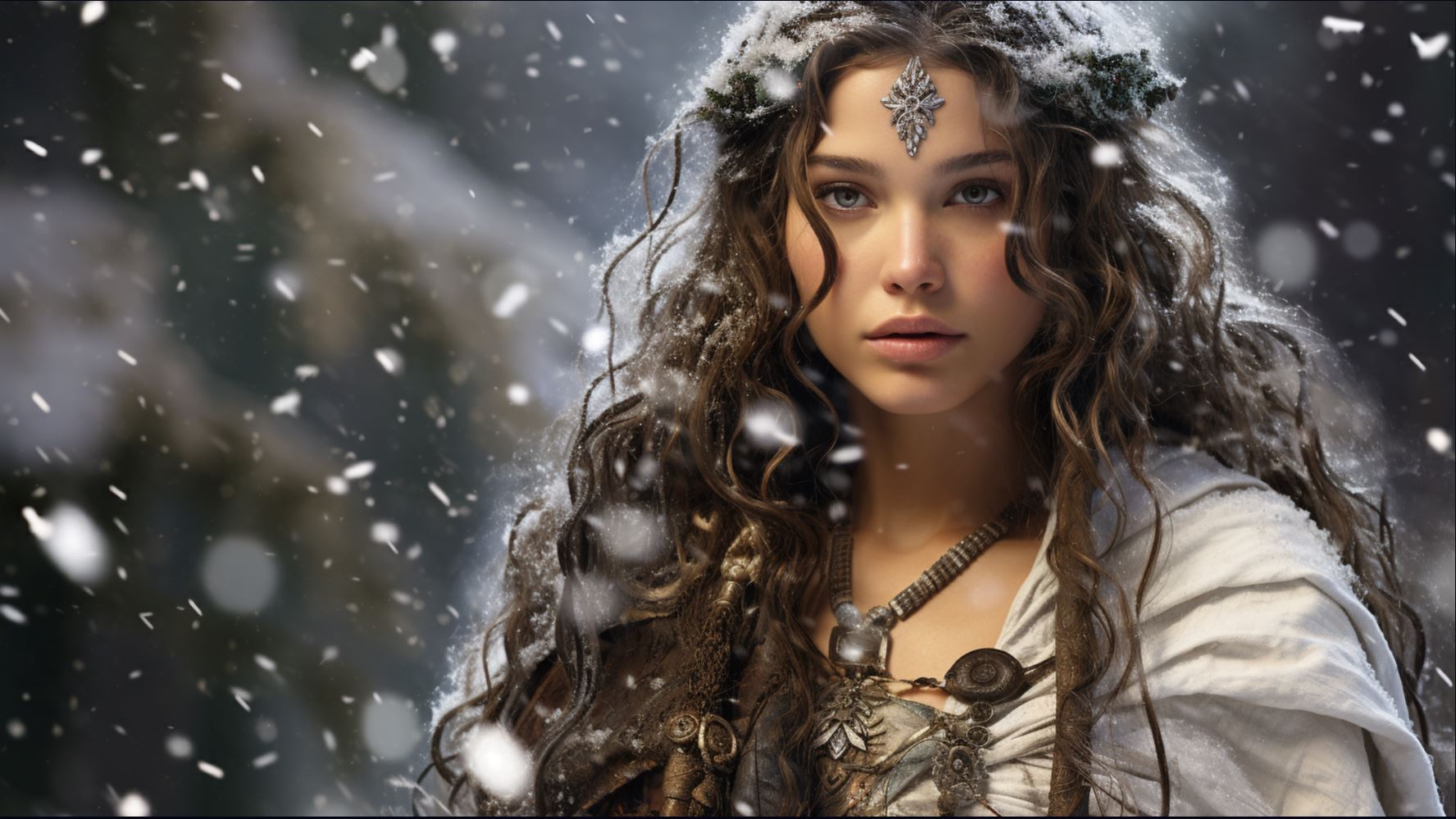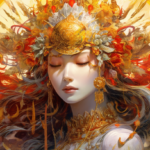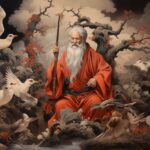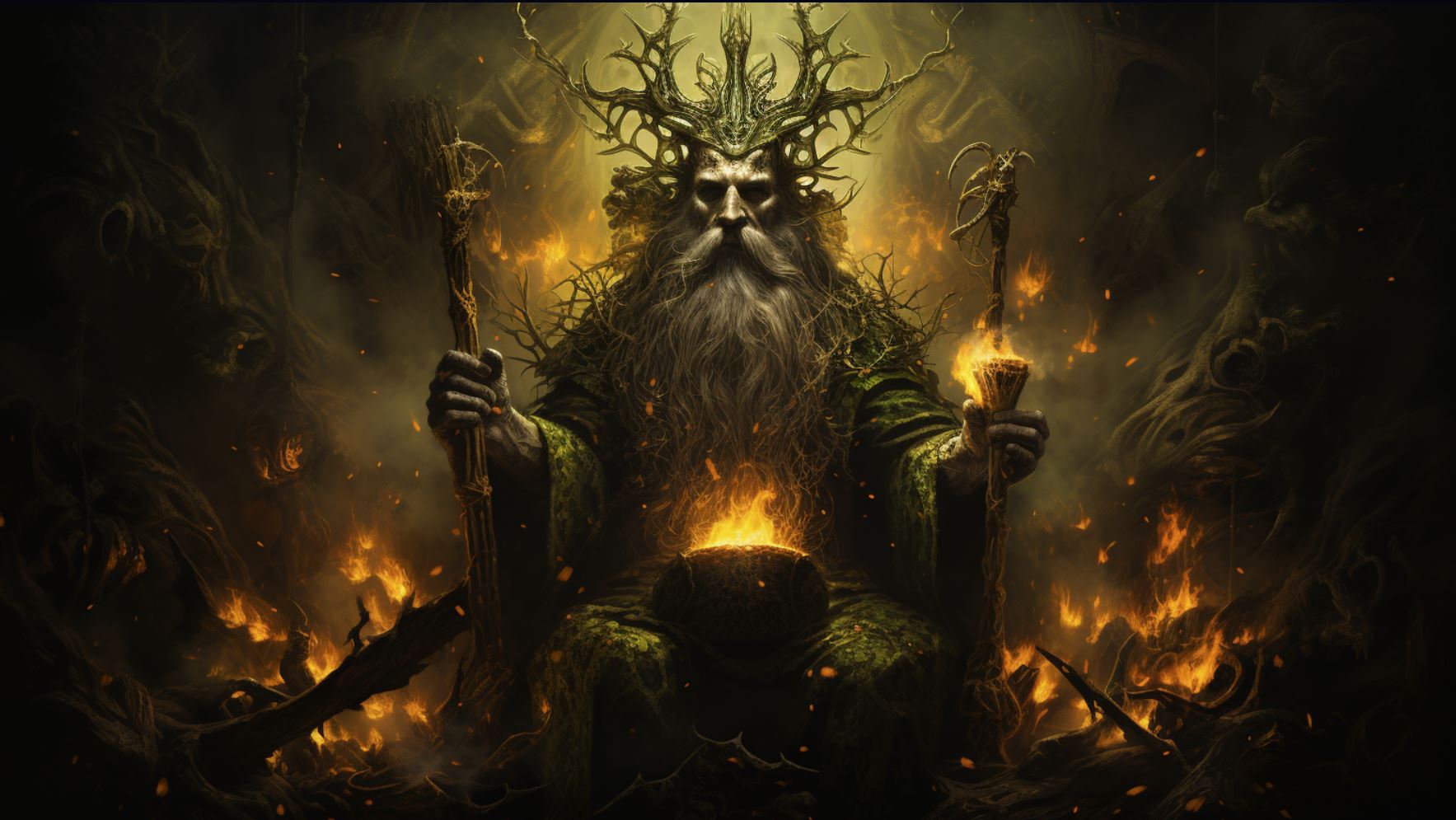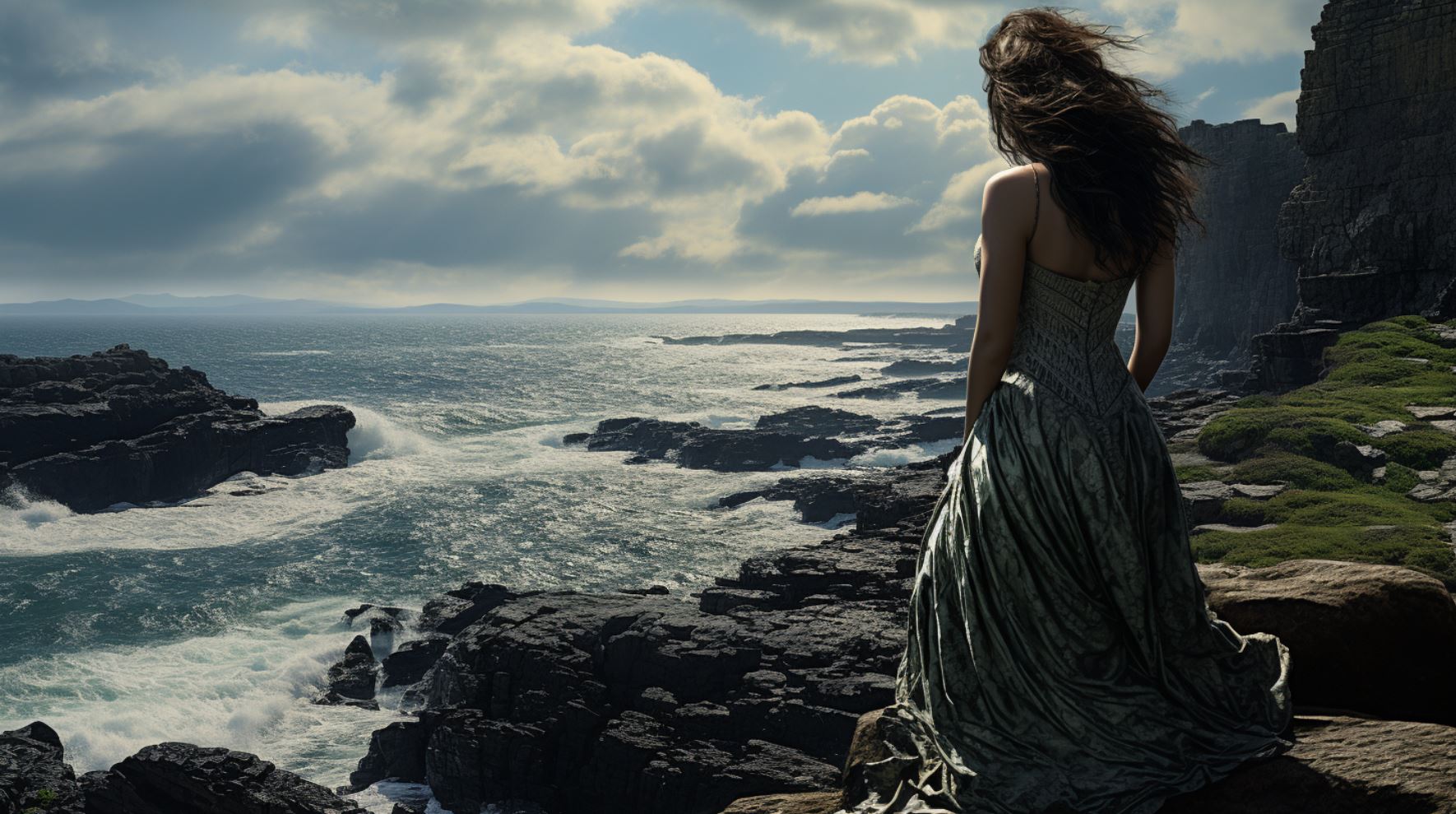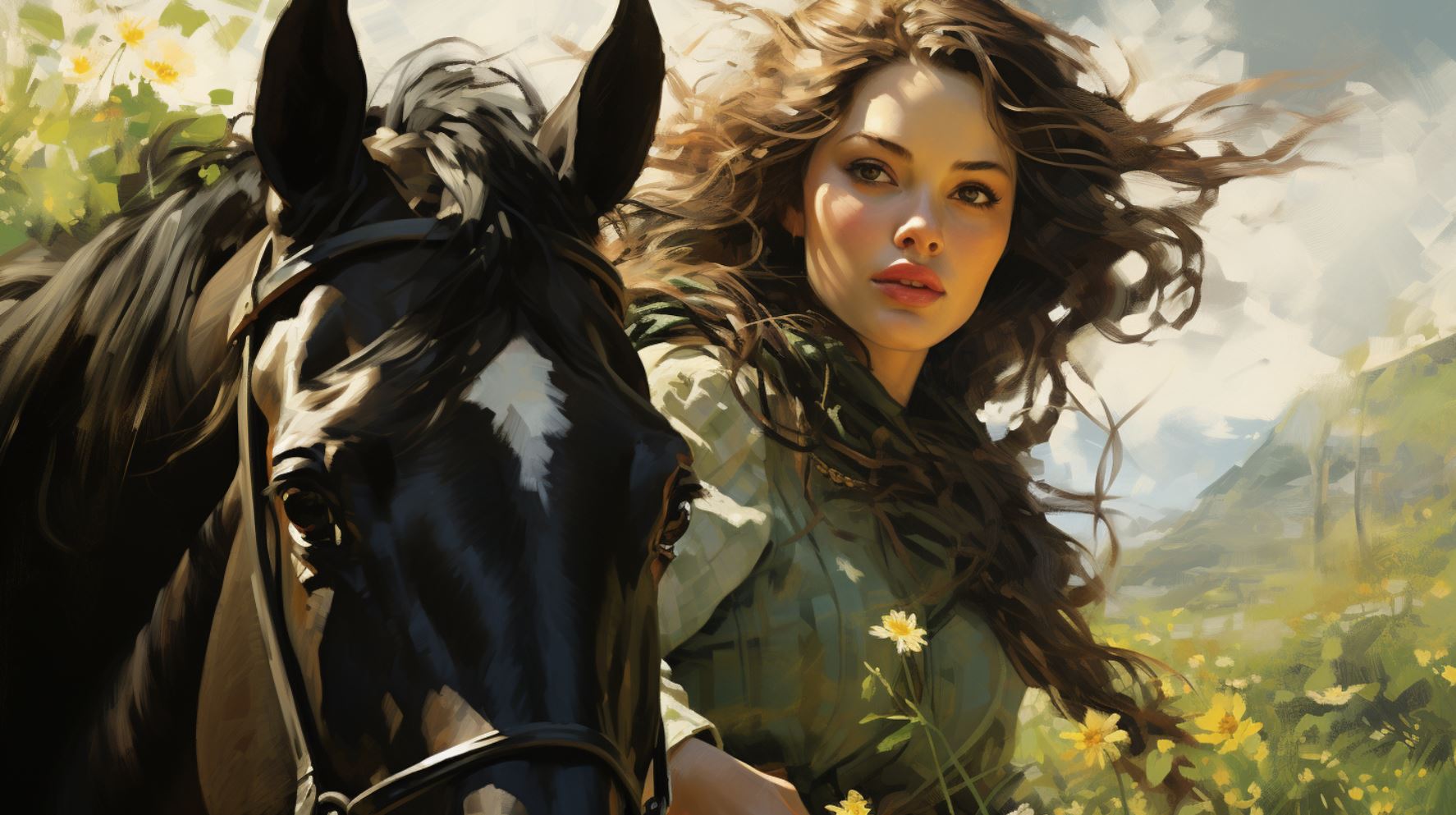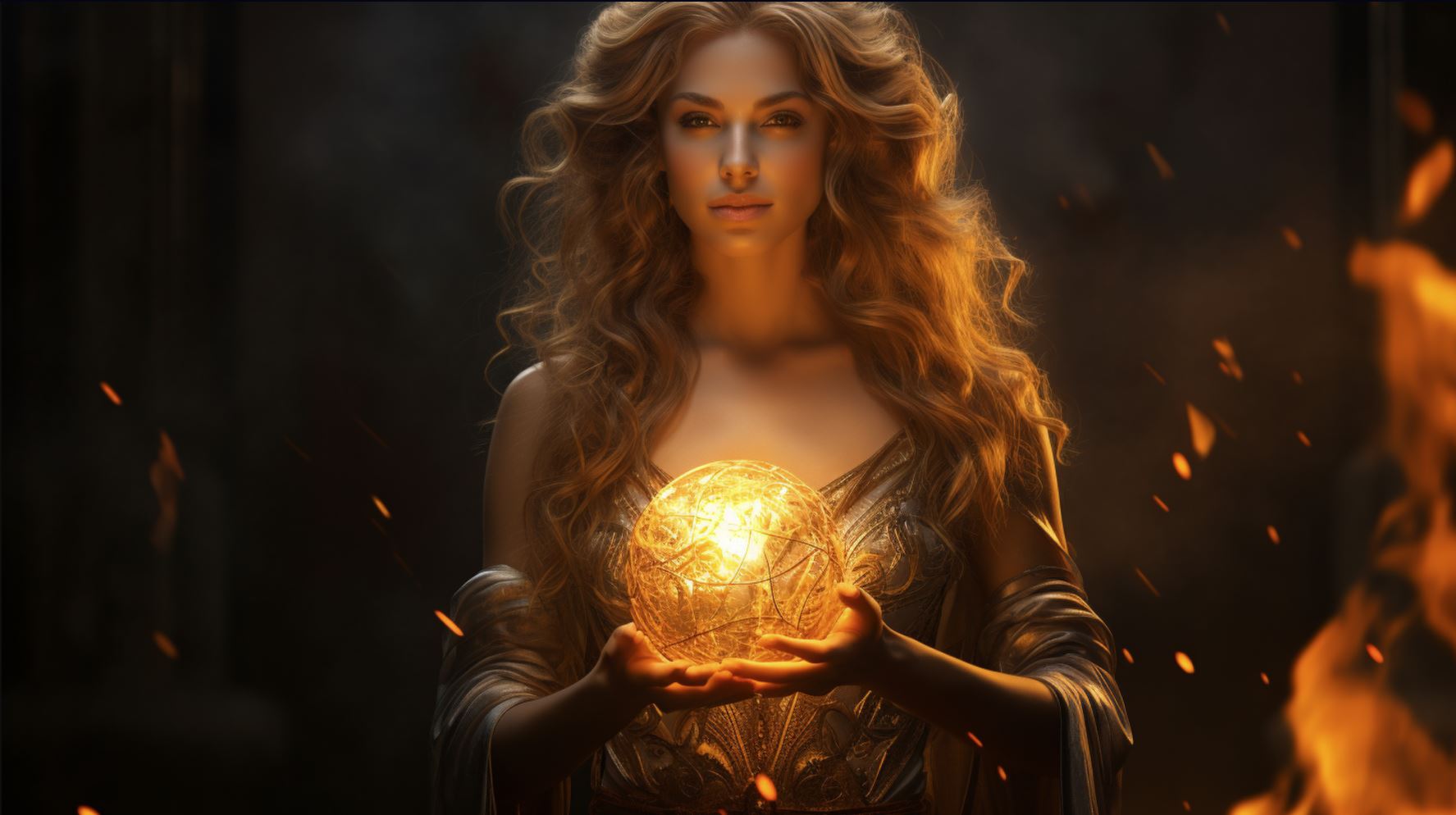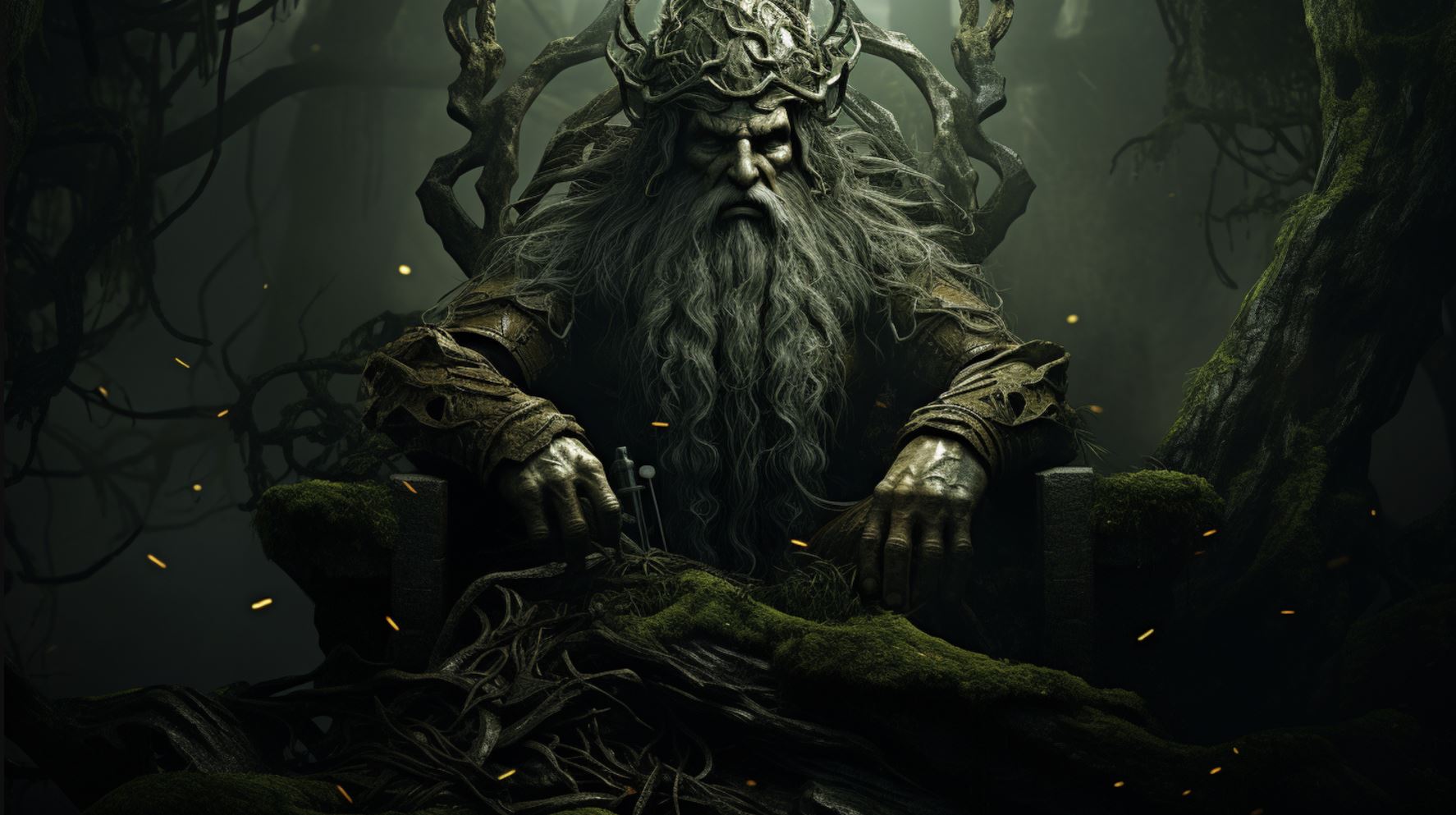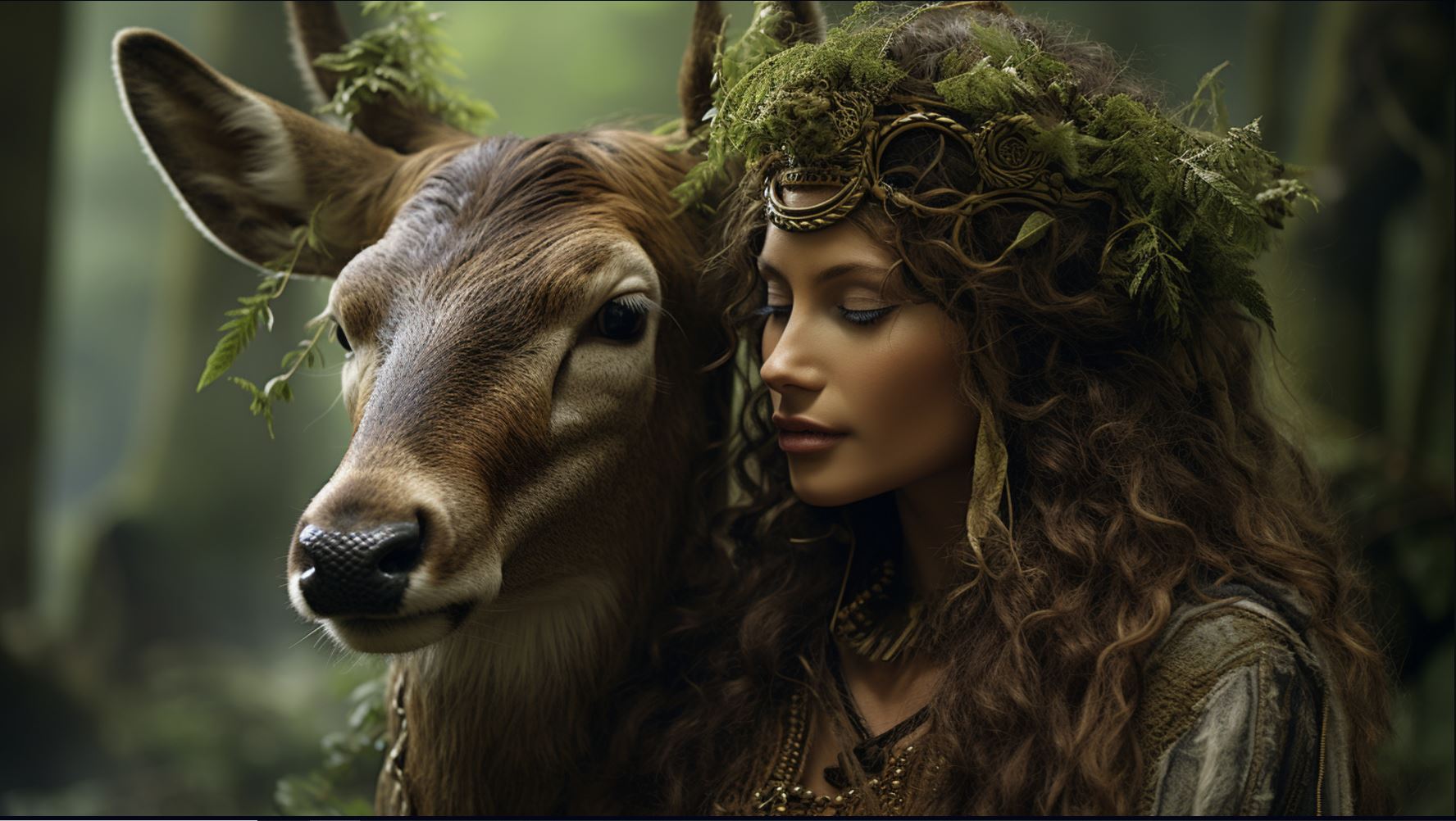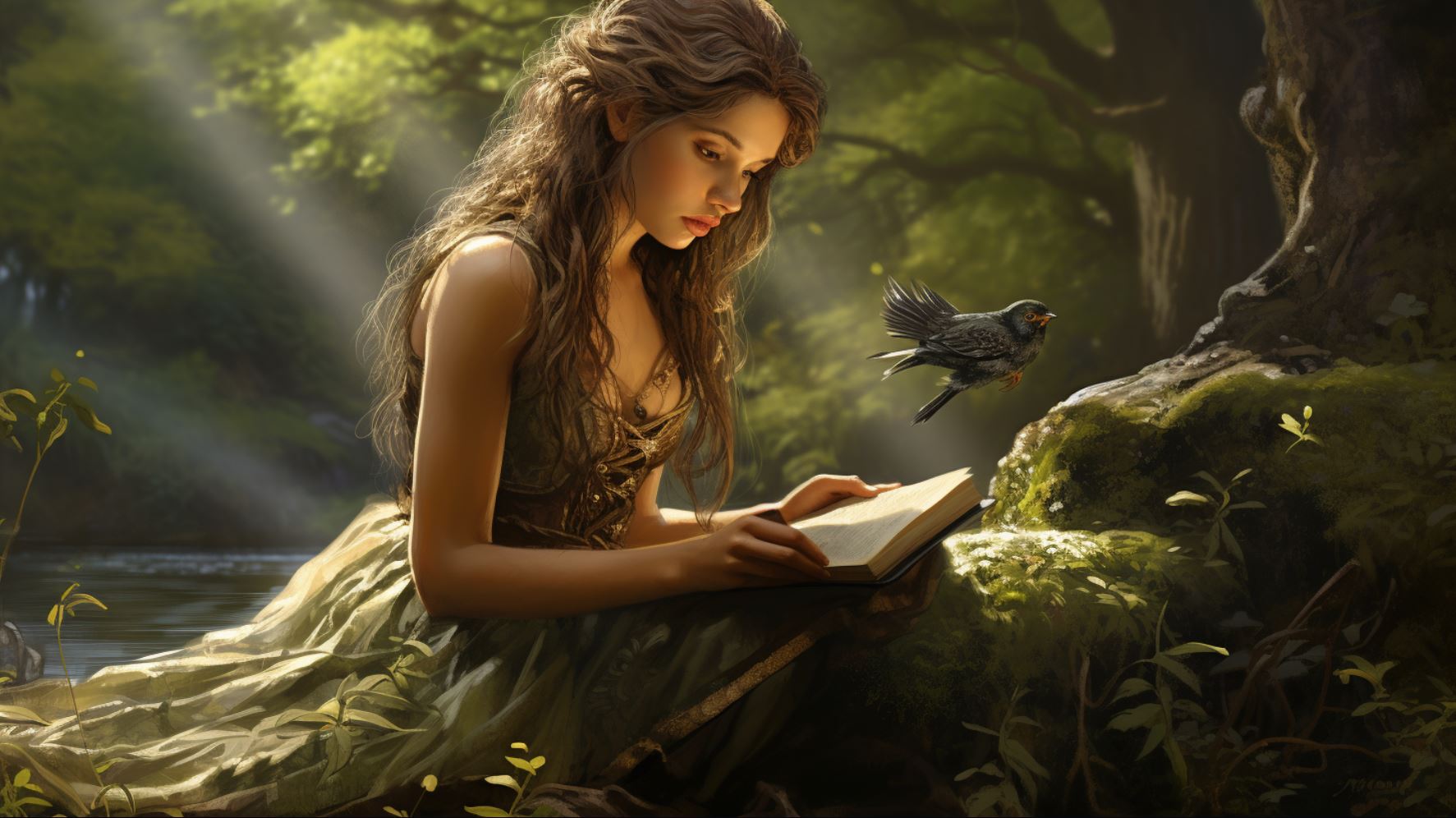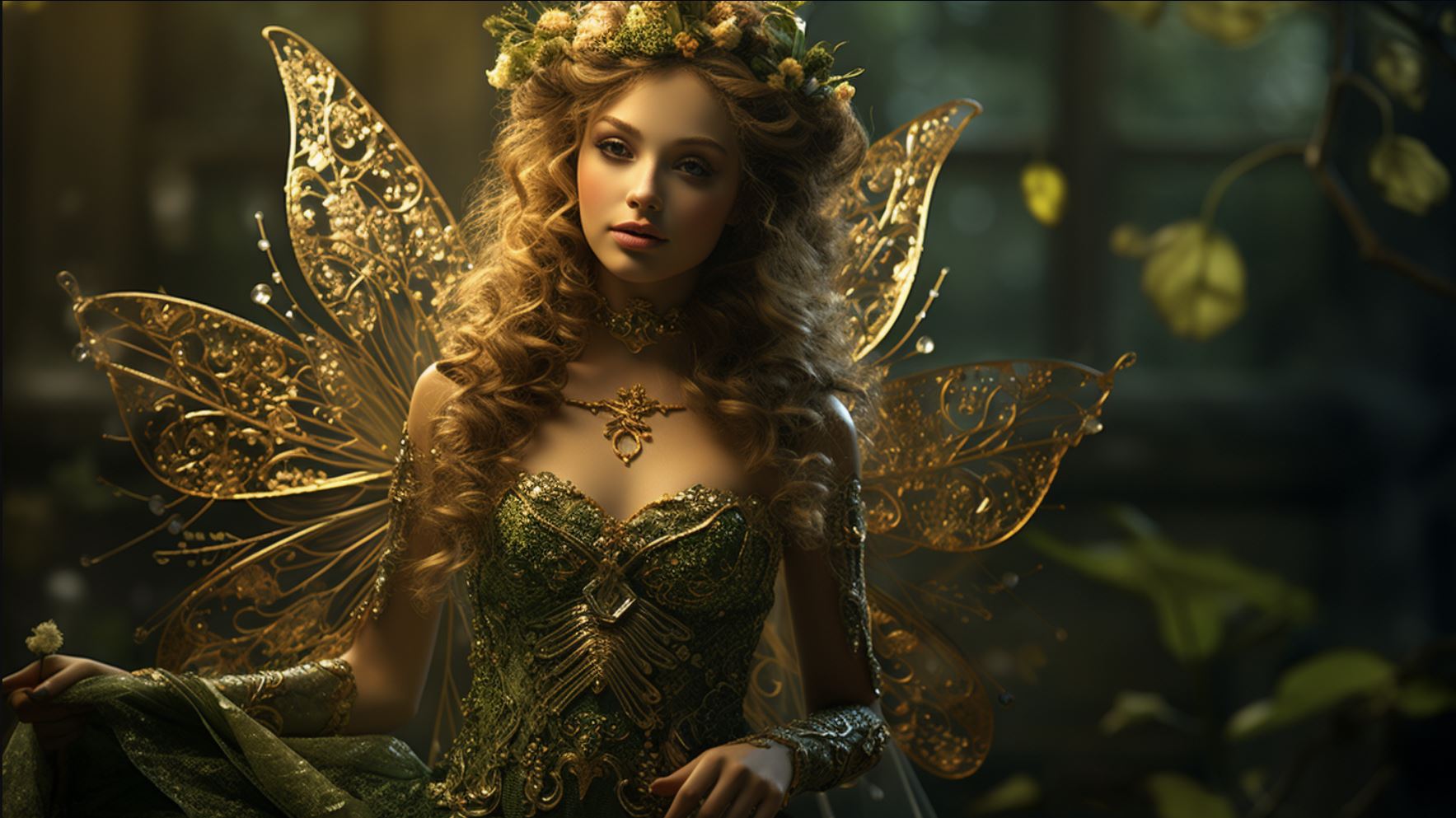Tlachtga Goddess: A Tragic Figure in Irish Mythology with Deep Roots in Ancient Celtic Traditions
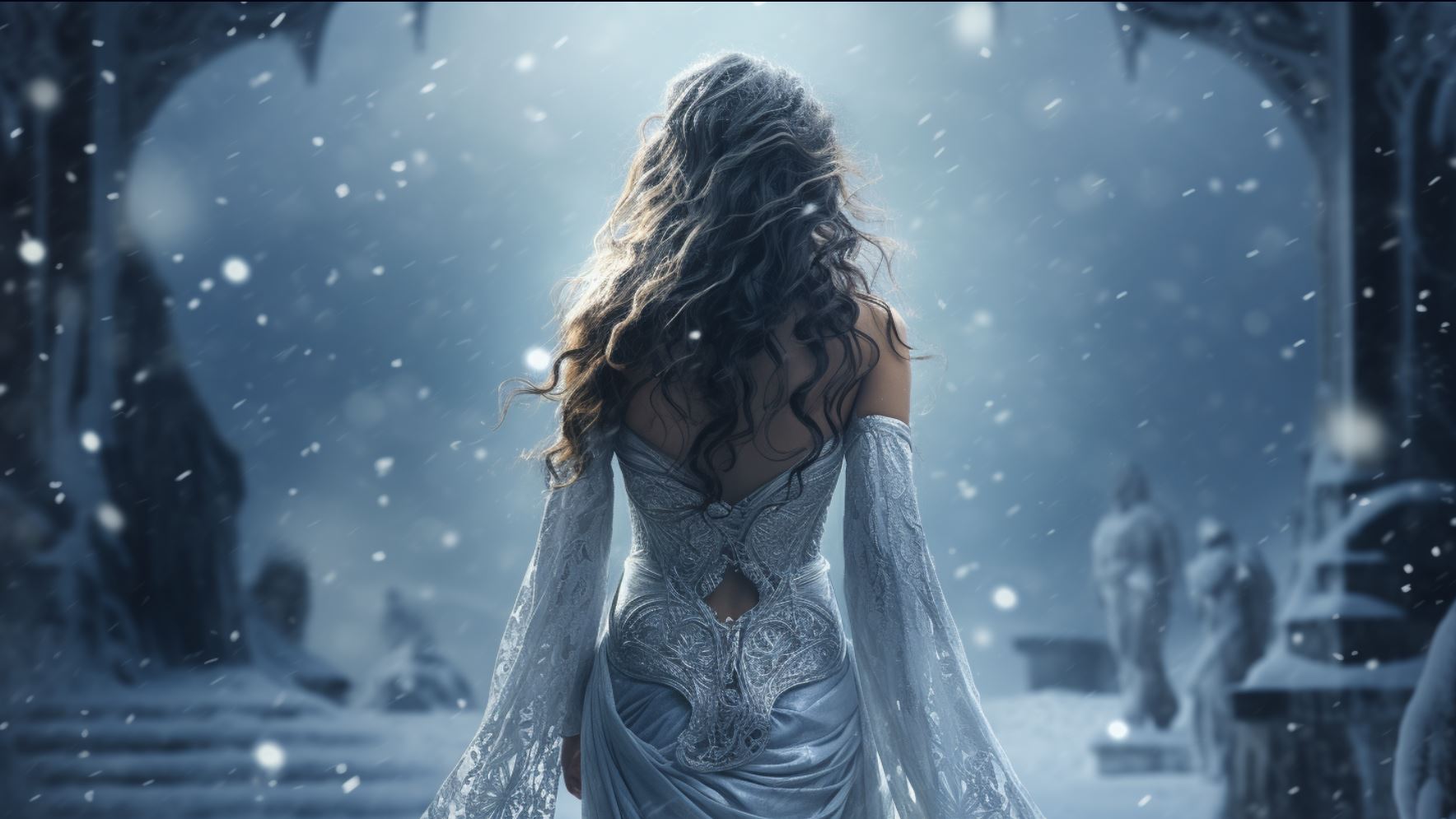
Tlachtga, an Irish goddess associated with the theme ‘Tlachtga goddess’, is a tragic figure in Irish mythology. Her name means ‘earthly spear’ and she is linked to the Hill of Tlachtga near Tara.
Tlachtga is connected to the festival of Samhain, which marked the end of the Celtic year and the beginning of winter. She is believed to have influenced the origins of Halloween.
The Hill of Tlachtga served as a sacred site where druids lit a great bonfire and carried torches to each home during Samhain. Tlachtga’s story intertwines with the legends of Mog Roith and holds significance in Irish culture.
The Tragic Tale of Tlachtga
The story of Tlachtga, a goddess associated with profound tragedy, unfolds within the rich tapestry of Irish mythology. This section delves into the origins, background, and significant associations surrounding Tlachtga, revealing the compelling aspects of her tale.
The Origins and Background of Tlachtga
Tlachtga’s origin and background are shrouded in ancient mystery. Deeply rooted in Celtic traditions, her name, “Tlachtga,” meaning ‘earthly spear,’ hints at her connection with powerful forces of nature. Legends suggest that she was a figure of great significance during the Celtic New Year, perceived as a time when the boundaries between the earthly realm and the otherworld were remarkably close.
Tlachtga in Celtic Mythology
Within the vast tapestry of Celtic mythology, Tlachtga holds a unique position. She emerges as a tragic figure whose presence resonates with both sorrow and resilience. As the daughter of Mog Roith, a renowned druid of Munster, Tlachtga’s story intertwines with intriguing legends and mysterious accounts.
Her path intersects with the tales of other mythological figures, such as Etain and Midir, creating an intricate web of narratives.
The Association with Hill of Tlachtga
One key aspect of Tlachtga’s mythological significance lies in her association with the Hill of Tlachtga, known today as the Hill of Ward, located just northwest of Tara. This sacred site served as the focal point for ancient Celtic celebrations, particularly during the Samhain festival.
Druids gathered on this hill, invoking spiritual connections and igniting grand bonfires that held deep ritualistic meaning. Tlachtga’s presence at the Hill of Tlachtga symbolizes the convergence of worlds and the pivotal role she played in the intertwining of ancient traditions and beliefs.
The Festival of Samhain and Tlachtga
The Festival of Samhain holds great significance in Celtic traditions and is closely connected to the mythical figure of Tlachtga. This section delves into the profound relationship between Tlachtga and the Samhain festivities, uncovering the ancient rituals and beliefs associated with this enchanting celebration.
The Connection between Tlachtga and Samhain
Tlachtga is intricately tied to the festival of Samhain, which marks the transition from the harvest season to winter. This sacred time of the year was believed to be when the veil between the physical world and the spiritual realm was at its thinnest.
Tlachtga served as a focal point where druids believed the connection between these two realms was the strongest, particularly during the New Year.
The Role of Tlachtga in the Samhain Celebrations
During Samhain, the ancient Celts gathered to honor their ancestors and seek protection from the spiritual forces that roamed the earth.
Tlachtga played a vital role in these celebrations, where her presence was invoked to facilitate communication with the otherworldly beings. The druids would light a grand bonfire on the Hill of Tlachtga, symbolizing the guiding light amidst the darkness of winter, and carry torches from there to every home, warding off malevolent spirits and invoking blessings.
- Tlachtga’s role as a conduit between the human and spiritual realms was believed to ensure a harmonious transition into the new year.
- It was a time for the community to come together, halt wars, and embrace peace, reflecting the importance of unity and reverence during this sacred occasion.
- Tlachtga’s connection to Samhain ultimately gave birth to the customs and traditions associated with Halloween, a modern-day manifestation of this ancient festival.
Exploring the deep-rooted connection between Tlachtga and Samhain illuminates the profound influence this goddess had on the Celtic culture and provides insights into the origin of contemporary Halloween customs.
Tlachtga and Mog Roith: Legends and Connections
Discover the intriguing connection between Tlachtga and the mysterious figure of Mog Roith in Celtic mythology. This section delves into the legends surrounding Mog Roith and explores the role of Tlachtga in his stories.
The Mysterious Figure of Mog Roith
Unearth the enigmatic tales of Mog Roith, a powerful druid of Munster in Irish mythology. Known for his extraordinary powers and wisdom, Mog Roith captivates with his presence in ancient legends and plays a significant role in the intricacies of Tlachtga’s story.
Tlachtga’s Presence in the Legends of Mog Roith
Unveil the intertwining narratives that bring Tlachtga and Mog Roith together. Explore the legends and myths that highlight Tlachtga’s remarkable presence in the enchanting tales of Mog Roith, revealing the depth of their connection and its significance in Celtic folklore.
- Experience their encounters in tales of magic and destiny.
- Delve into the prophecies and symbols that bind their stories.
- Uncover the secrets of their shared past and its impact on their respective destinies.
Discover how Tlachtga’s tragic fate becomes intertwined with the compelling narratives of Mog Roith, adding a layer of complexity and depth to their captivating legends.
As you delve into this section, immerse yourself in the enchanting world of Tlachtga goddess and Mog Roith, where ancient myths and legends unfold, weaving a tapestry of sorrow, magic, and eternal connections.
The Legacy of Tlachtga in Irish Culture
Tlachtga, the tragic goddess of Irish mythology, leaves a profound legacy in the rich tapestry of Irish culture. Her influence can be seen in various aspects, from the transformation of Tlachtga into Halloween to her lasting impact on Celtic mythology and traditions.
The Transformation of Tlachtga into Halloween
Tlachtga’s association with the festival of Samhain played a pivotal role in the evolution of Halloween. Samhain, marking the end of the Celtic year and the beginning of winter, was a time when the boundaries between the mortal realm and the spirit world were believed to be blurred.
Tlachtga’s connection to this festival, as well as her ties to the Hill of Tlachtga, became intertwined with the customs and traditions that eventually shaped Halloween as we know it today.
During Samhain, it was believed that ancestral spirits would roam the earth, and communities would come together to honor and communicate with their ancestors. The lighting of bonfires on the Hill of Tlachtga symbolized both the warmth and protection from evil spirits.
This act of lighting fires also represented the transition from the old Celtic year to the new one, signifying a time of renewal and hope.
Tlachtga’s Influence on Celtic Mythology and Traditions
Beyond the realm of Halloween, Tlachtga’s name echoes throughout Celtic mythology and traditions.
Her tragic tale intertwines with the legendary figure of Mog Roith, a powerful druid from Munster. The precise details of her story may be shrouded in mystery, but her presence resonates in the narratives that depict martyrdom and sacrifice.
In the banshenchas and dindsenchas, Tlachtga becomes entwined with the stories of Etain and Midir, though the accounts may present incongruities. Nevertheless, her prominence in these tales cements her status as an influential goddess in Celtic mythology.
The Hill of Tlachtga, now known as the Hill of Ward, serves as a physical testament to the cultural significance of Tlachtga. Located 12 miles northwest of Tara, this sacred site was the heart of the Great Fire Festival, where the Celtic sun god was celebrated at the year’s end.
Today, Tlachtga continues to be a symbol of resilience and tragedy, a reminder of the complexities and enduring allure of Irish mythology and folklore. Her legacy lives on, inspiring curiosity and a deeper understanding of ancient Celtic traditions.
Exploring Tlachtga Hill and its Significance
Tlachtga Hill, also known as the Hill of Ward, holds a profound significance in Irish mythology and ancient Celtic traditions. This sacred site, located 12 miles northwest of Tara, offers a glimpse into the rich history and legends surrounding Tlachtga, the goddess associated with this mystical place.
Exploring Tlachtga Hill allows us to unravel the secrets and enigmas that have captivated generations.
Discovering the Sacred Secrets of Tlachtga Hill
At the summit of Tlachtga Hill, the ancient remnants of rituals and ceremonies come to life. As we journey through its hallowed ground, we can sense the spiritual energy that once enveloped this sacred site.
The Hill of Ward reveals itself as a place where the boundaries between worlds blurred, where druids communed with the divine, and where the goddess Tlachtga held sway.
Stone structures and earthworks scattered across Tlachtga Hill offer clues to its former grandeur.
Mysterious symbols etched onto rocks hint at the rituals performed here, while ancient artifacts unearthed from the soil unveil glimpses of the past. It is a place where one can feel the weight of centuries and connect with the ancient spirits that once inhabited this hallowed ground.
The Enigma of Tlachtga Hill: Legends and History
Tlachtga Hill’s significance extends beyond its physical features, as it is intertwined with captivating legends and historical accounts. Stories of Tlachtga, Mog Roith, and ancient Celtic traditions come alive in the narratives surrounding this enigmatic hill.
Legends suggest that Tlachtga herself performed powerful rituals atop the hill, harnessing the energy of the land and the cosmos. It is here that the ancient Celts celebrated their great Festival of Fire, paying homage to the sun god at the end of the year.
The rituals conducted on Tlachtga Hill held deep meaning, representing the cyclical nature of life, death, and rebirth.
Through the lens of history, we uncover the influence of Tlachtga Hill on Irish culture.
The Samhain festival, marking the transition from one year to the next, carried on the spirit of Tlachtga’s ancient traditions. It is believed that the festival evolved into Halloween through the merging of Celtic and Christian beliefs.
Tlachtga Hill, an integral part of this cultural tapestry, continues to inspire generations as they explore its sacred mysteries.
Tlachtga: A Symbol of Tragedy and Resilience
Tlachtga, the enigmatic Irish goddess, embodies both tragedy and resilience within Irish mythology. Her story has captivated generations with its tales of love, loss, and sacrifice. Let us delve deeper into the story behind Tlachtga’s tragic fate and the lasting impact she has had on Irish mythology.
Unraveling the Story behind Tlachtga’s Tragic Fate
The tale of Tlachtga is shrouded in mystery and sorrow. According to ancient legends, Tlachtga was a powerful figure associated with the mystical Hill of Tlachtga near Tara. Her name, meaning ‘earthly spear,’ speaks to her significant role in bridging the realms of the mortal and the divine.
While the details of Tlachtga’s life remain largely elusive, her story often intersects with the figure of Mog Roith, a revered druid from Munster. However, confusion lingers in the legends surrounding her martyr-like demise, leaving scholars eager to unravel the truth behind her tragic fate.
Tlachtga’s Legacy and Impact in Irish Mythology
Despite the uncertainties surrounding her story, Tlachtga’s legacy holds a profound impact on Irish mythology. She is closely associated with the festival of Samhain, marking the end of the Celtic year and the advent of winter.
As the veil between worlds grew thin during Samhain, Tlachtga symbolized the connection between the mortal realm and the spirit world.
Furthermore, Tlachtga’s association with the Hill of Tlachtga, once a sacred ground for druidic rituals, solidifies her significance in ancient Celtic traditions.
The lighting of great bonfires and the carrying of torches from the hill to each home during Samhain were powerful rituals that honored Tlachtga and invoked her protection.
Today, Tlachtga’s legacy lives on, as she is regarded as a symbol of resilience and the enduring spirit of the Irish people.
Her story continues to captivate and serve as a reminder of the deep-rooted mythology and cultural heritage that is cherished and celebrated.
The Modern-day Significance of Tlachtga
Tlachtga, the enigmatic goddess of Irish mythology, continues to captivate the interest and curiosity of scholars and enthusiasts, reviving a once-forgotten knowledge of ancient Celtic traditions. Her story and cultural importance hold a special place in modern-day explorations of Irish folklore and spirituality.
Tlachtga Goddess: Reviving Interest and Knowledge
With the resurgence of interest in mythology and ancient cultures, Tlachtga has emerged from the shadows of forgotten legends. Researchers and historians are delving deeper into the rich tapestry of her narrative, seeking to unravel the layers of symbolism and meaning embedded within her tragic tale.
Through the revival of Tlachtga’s name and story, a renewed appreciation for the interconnectedness of nature, spirituality, and human existence is fostered. Scholars and enthusiasts alike are drawn to her story as a reminder of the profound wisdom contained in ancient mythologies.
Exploring Tlachtga’s Cultural Importance Today
Tlachtga’s cultural importance extends beyond her mythological significance. As we delve into her story, we uncover the threads that connect her to contemporary traditions and celebrations.
- Tlachtga’s Influence on Modern Halloween: It is widely believed that Tlachtga played a crucial role in the evolution of Halloween.
By exploring the origins of this beloved holiday, we gain a deeper understanding of the ancient customs and rituals that have shaped our modern celebrations.
- Tlachtga as a Symbol of Resilience: Tlachtga’s tragic tale serves as a timeless reminder of the human capacity to endure and overcome adversity.
Her story resonates with individuals who find solace and inspiration in tales of resilience and the triumph of the human spirit.
- Spiritual Connections: Tlachtga’s association with druidic practices and the merging of worlds during Samhain offers a window into the spiritual beliefs and traditions of ancient Celtic cultures.
Exploring these connections allows us to deepen our connection to nature and gain insight into our own spiritual journeys.
- Preservation of Cultural Heritage: The exploration and preservation of Tlachtga’s story contribute to the larger effort of safeguarding and celebrating Irish cultural heritage.
By unraveling the mysteries surrounding Tlachtga, we honor the traditions of our ancestors and ensure their legacy lives on.
As we delve into the modern significance of Tlachtga, her story continues to inspire, educate, and illuminate our understanding of ancient Celtic traditions and their enduring impact on our lives today.
.

